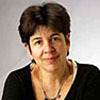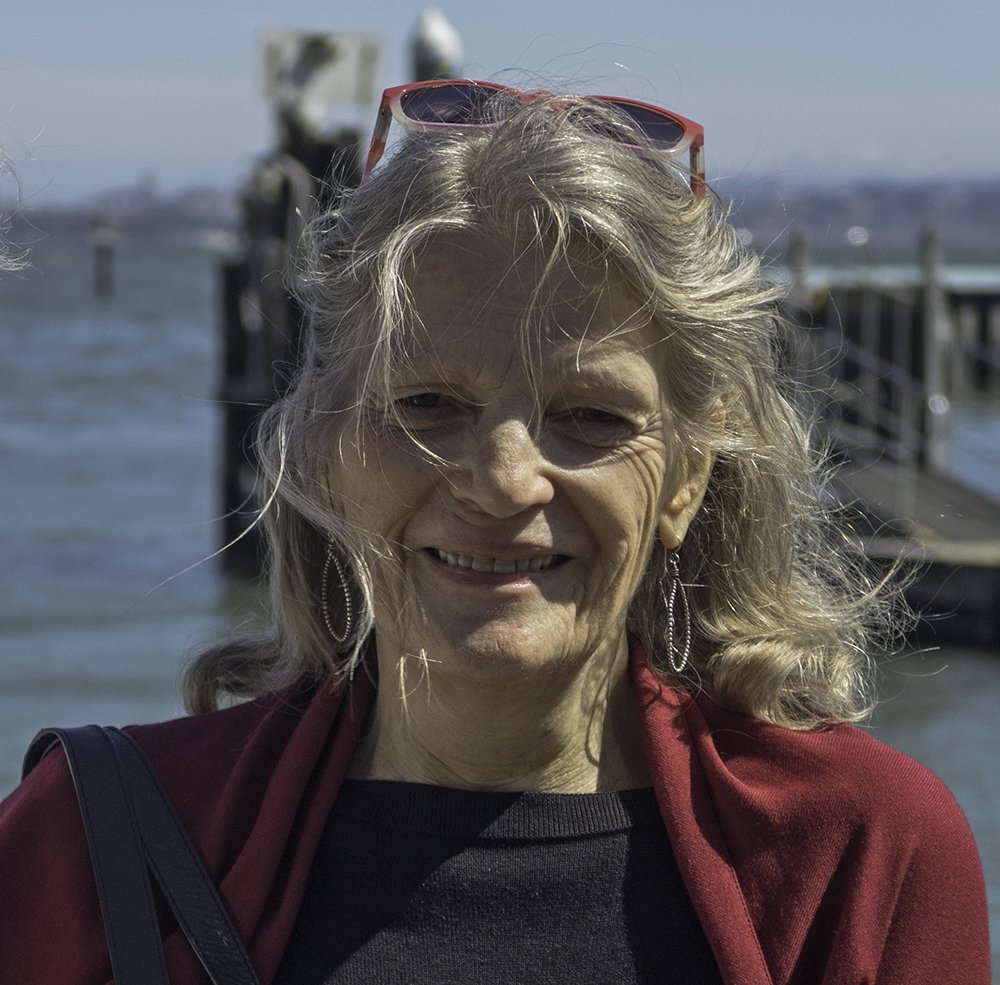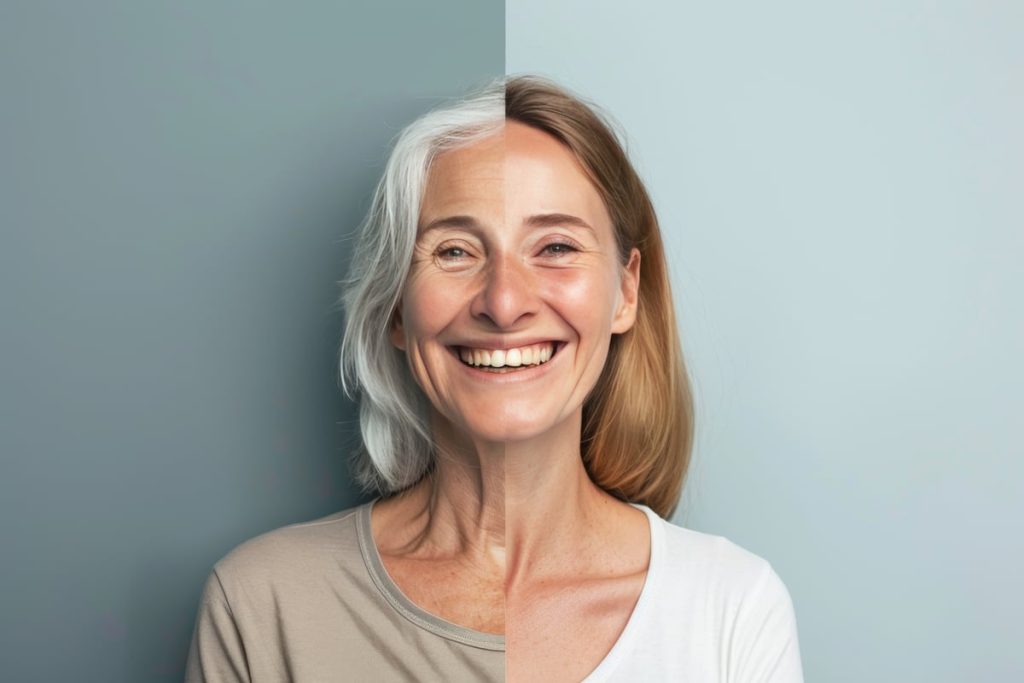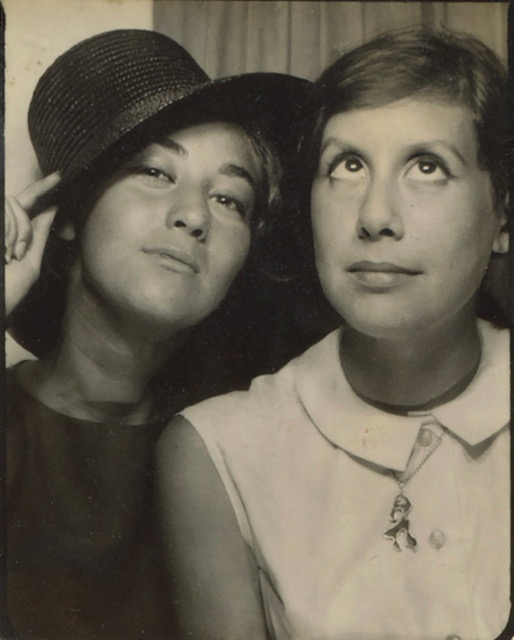What happens when a 70-something professional photographer sets out to record her own body as she ages and the bodies of other, older people, sometimes naked and sometimes not? In this article, Journalist Judith Graham interviews the photographer, Marna Clarke, for Kaiser Health News (KHN) and describes reactions—in the art world and beyond—to Clarke’s moving portraits of aging. Graham’s article was posted on the KHN website on October 7, 2022. It also ran in the San Francisco Chronicle. Funding from the Silver Century Foundation helps KHN develop articles (like this one) on longevity and related health and social issues.
A dozen years ago, at age 70, Marna Clarke had a dream. She was walking on a sidewalk and rounded a corner. Ahead of her, she saw an end to the path and nothing beyond.
It was a turning point for Clarke. “I realized, ‘Oh my God, I’m nearer the end than the beginning,’” she said. Soon, she was seized by a desire to examine what she looked like at that time—and to document the results.
Clarke, a professional photographer decades before, picked up a camera and began capturing images of her face, hair, eyes, arms, legs, feet, hands, and torso. In many, she was undressed. “I was exploring the physical part of being older,” she told me.
It was a radical act: older women are largely invisible in our culture, and honest and unsentimental portraits of their bodies are almost never seen.
I found out there’s a taboo about showing older adults’ bodies—some people were just aghast.
—Marna Clarke
Before long, Clarke, who lives in Inverness, CA, turned her lens on her partner, Igor Sazevich, a painter and architect 11 years her senior, and began recording scenes of their life together. Eventually, she realized they were growing visibly older in these photographs. And she understood she was creating a multiyear portrait of aging.
The collection that resulted, which she titled “Time As We Know It,” this year won a LensCulture Critics’ Choice Award, given to 40 photographers on five continents. “There is a universality and humility in seeing these images which remind us of the power of love and the fragility of life,” wrote Rhea Combs of the Smithsonian Institution’s National Portrait Gallery, one of the judges.
Early on, some people were offended by the images Clarke displayed at galleries in the San Francisco Bay Area, near her home. “I found out there’s a taboo about showing older adults’ bodies—some people were just aghast,” she told me in a phone conversation.
But many people in their 50s, 60s, 70s and 80s expressed gratitude. “I learned that older people are dying for some kind of recognition and acceptance and that they want to feel seen—to feel that they’re not invisible,” Clarke said.
Art has many benefits in later life, both for creators and for those who enjoy their work. It can improve health by expanding well-being, cultivating a sense of purpose and countering beliefs such as the assumption that older age is defined almost exclusively by deterioration and decline, Gene Cohen, MD, wrote in The Creative Age: Awakening Human Potential in the Second Half of Life, published in 2000.
Perspective and acceptance of her own body have been benefits of her project.
Cohen, a psychiatrist, was the first director of the Center for Aging, Health and Humanities at George Washington University and acting director of the National Institute on Aging from 1991 to 1993.
In 2006, Cohen published findings from the Creativity and Aging Study, conducted in San Francisco, CA, Brooklyn, NY, and the Washington, DC, area. Two groups of older adults were studied: those who participated weekly in arts programs led by professionals, and people who went about their usual business. Those in the first group saw doctors less often, used less medication, were more active and had better physical and mental health overall, the study found.
For Clarke, “perspective” and “acceptance of my body as it is” have been benefits of her 12-year project. As a young and middle-aged woman, she said, she was “obsessed” with and anxious about her appearance. “Now, I think there’s a beauty that comes out of people when they accept who they are,” she told me. “It’s altered how I look at myself and how I see others.”
Shortly after our first conversation, in early August, Clarke, now 82, found herself at another turning point with the death of Sazevich, 93, who had lymphoma and refused chemotherapy. The couple had been together since 2003 but hadn’t married.
Sazevich had fallen three times in the months before, broken his hip, contracted pneumonia in the hospital and returned home on hospice. As he lay in bed on his final day, receiving morphine and surrounded by family, two dogs belonging to one of his daughters came close, checking on him every hour. At the moment of his death, they growled, probably because “they felt a change in the energy,” Clarke said.
It takes a community to comfort an older adult who is coping with loss.
“It was amazing—I have never been through an experience like that in my life,” she said about Sazevich’s death. “There was so much love in that room, you could cut it with a knife. I think it’s changed me. It’s given me a glimpse of what’s possible with humans.”
Everywhere she goes in Inverness, Clarke runs into people who tell her how sorry they are for her loss and ask if they can help. “I am overwhelmed by the care pouring over me from my friends and family,” she told me. “It’s like a huge embrace.”
It takes a community to comfort an older adult coping with loss, just as it takes a community to raise a child. Clarke said she is still “up and down emotionally … questioning what death is” as she processes her loss.
Eventually, Clarke said, she wants to restart work on “Time As We Know It.”
“Because it’s about aging me,” she said. “My aging. And that’s what I’m committed to. It’s given me a purpose. And when you’re growing old, you need to have something you love and makes you feel alive.”

Judith Graham writes a column on aging and health for KFF Health News, where she’s a contributing columnist. She also freelances for other publications. Earlier in her career, Judith contributed more than 80 pieces to the New York Times blog, The New Old Age. She was nominated for a Pulitzer Prize for a series on defective pacemakers and was part of a Chicago Tribune team that won a Pulitzer in 2001.



